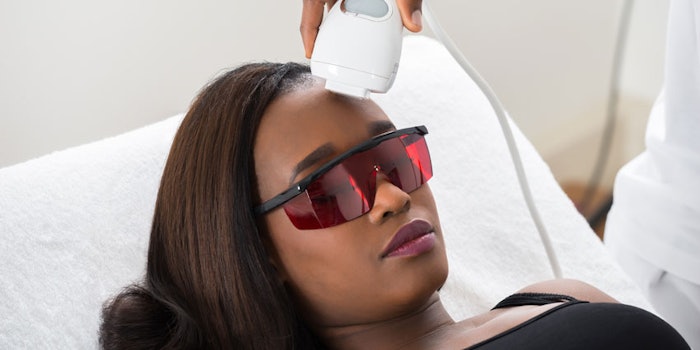
A non-invasive laser therapy called fractional skin resurfacing is more than just a cosmetic treatment. This laser therapy, called Fraxel, has been shown to help with actinic keratosis, a common pre-cancerous skin condition. By sending tiny, microscopic columns of laser energy into the skin, this therapy helps remove unhealthy skin cells making it a useful preventative treatment. To learn more about how this laser therapy works, Skin Inc. followed up with Jennifer Chwalek, M.D., board certified dermatologist and clinical instructor of dermatology at Mount Sinai Medical Center.
Skin Inc. (SI): What is the fractionated laser resurfacing and what is it used for?
Jennifer Chwalek (JC): Fractionated laser resurfacing is either non-ablative or ablative (fractionated CO2 or Erbium:Yag). In the former case, there are microscopic treatment zones of thermal injury. In the latter case, these small zones of skin are actually destroyed. Think of it as burning little holes in the skin, which is a more aggressive treatment for more severe scars or photodamage. It is used to treat scars, photodamage and to improve the overall texture and tone of the skin.
SI: How does the fractional laser resurfacing work?
JC: By creating microscopic zones of injury in the skin, it stimulates a wound healing cascade, which involves the up-regulation of many genes and cytokines that ultimately result in increased collagen production and photo rejuvenation.
SI: Are there any contraindications for this laser treatment?
JC: It is important to have a consultation with a laser expert prior to any treatment. There are few true contraindications for fractional laser resurfacing; some include active infection in or around the treatment area and history of poor wound healing or abnormal scarring (keloid formation). Also, if a patient has a history of melasma, it is important that it be used cautiously. Fractional laser resurfacing has been used to treat melasma and in select cases may help, but it can also potentially worsen it.
SI: Can you explain Actinic keratosis?
JC: Actinic keratosis (AK) are precancerous, rough, scaly patches of skin caused by UV damage. They usually develop in sun exposed areas like the face, scalp, ears, chest, arms and upper back. Left untreated, they may develop into skin cancer.
SI: How can the fractional laser resurfacing treat AKs? Why might someone opt for this over a cryo or PDT treatment?
JC: Fractional resurfacing works by stimulating a dermal regeneration, or healing response, which can help heal and improve photodamaged skin. In the case of ablative resurfacing, we are removing the top layers of damaged skin.
Fully ablative CO2 is the gold standard for treating photodamage but is not performed as often because of the risks of scarring and the prolonged downtime. Now, fractionated CO2 is more common where we treat a smaller percentage of the total skin. However, even non-ablative fraxel has shown efficacy in treating AKs. This is likely due to the limited number of skin cells that are destroyed during the process and the wound healing response that occurs.
Clinically, 2 to 3 non-ablative fractional laser treatments have been shown to reduce AKs by approximately 50-75% at six-month follow ups. Since a small percentage of skin is being treated with each treatment, it is not clear if fractional laser will result in a long-lasting remission so patients may need to have occasional treatments depending on the severity of the photodamage. An advantage to this treatment is that it can also result in improvement of fine lines and sun spots, resulting in a smoother, more even complexion over time.










